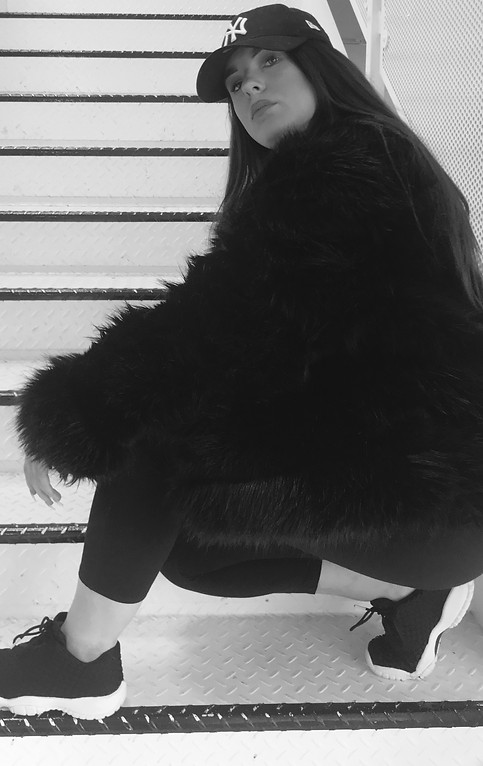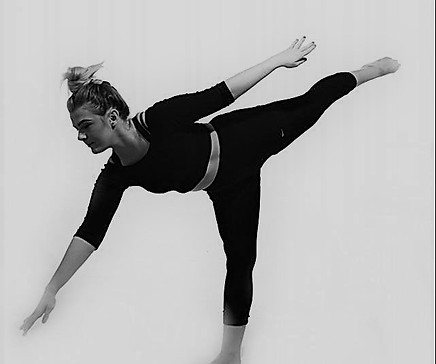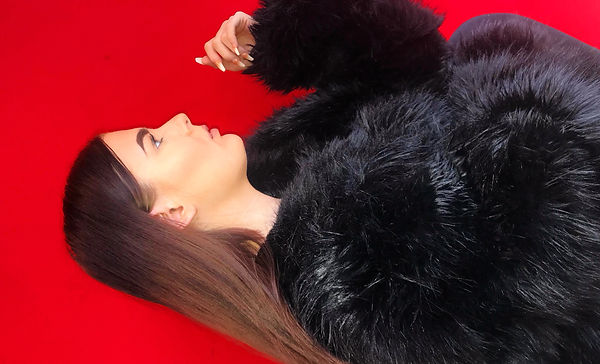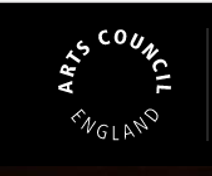
Demi
Mercer
Dance Artist & Freelance Performer
and Choreographer.

About Me
My name is Demi Mercer from Manchester and I'm currently based in the north west of England. I am currently towards the end of my final year at Liverpool john Moores University, studying a BA (Hons) Degree in Dance practices. I like to identify myself as a freelance performer and dance artist that specialises in styles such as contemporary and urban dance. Since I have been dancing from the age of eleven, there are many artists and famous works that have inspired me to become the artist I am today such as... Brian Friedman and Janelle Ginestra.
These artists in particular inspired me to try to push the boundaries and explore strategies and methods to fuse certain styles together as they have both become well recognised in the industry for adding urban flare to their technical and more classical contemporary aesthetic. I have trained in contemporary and urban dance for most of my career; I have such passion for both the styles so artists like Brian and Janelle are clear influences in some of my most recent works. My aspirations for the future are to continue perfecting my choreographic skills and visions as an artist to fuse the two opposite styles together. From being a dancer for all of my adult life, I have never seen a fused artist that use these two styles become well known or virally recognised for their work in this sector and I would like to become a choreographer that brings the art of fusing styles to light.
I would like to continue my professional development by having the ability to keep creating fused works and to research further into how styles are combined and how to make my choreography more cohesive. I will continue to take classes in both the urban and contemporary style, which I would then like to create my own workshops and promote my research and visions to eventually manage my very own dance company.
CV Attached:
The Industry



Brian Friedman Choreography (fusion style)
Urban dance covers a variety of movement that encompasses the essence of dance styles that were not particularly created inside a dance studio. Street dancers developed the style in urban neighbourhoods without a formal process. Street and Hip-Hop Dance encompasses the people and events since the late 1960s that have contributed to the development of the early urban dance moves, such as breaking, locking, roboting, and popping. Black Americans created these styles in New York City; they are collectively referred to as the funk styles. All of these dance styles are different stylistically. They share common ground in their street origins and in their improvisational nature (En.wikipedia.org, 2018). Urban dance styles are mostly recognised on television, such as commercial dance. This style is mostly used in music videos, on the catwalk and at fashion shows, artist tours, advertising campaigns, corporate events, TV and film. Many famous musicians such as Beyoncé and Chris Brown are prominent with the commercial style when touring the world with their music. They hire the best dancers in the industry that can execute the style perfectly. Just like other styles in the urban category, commercial dance has been developed from the streets and freestyle stylisation.
Contemporary dance describes many different techniques formed by pioneers in the style such as, Martha Graham, Jose Limon, Doris Humphrey and Merce Cunningham in the early 20th century (Giguere, 2013, Pg.2). There was a massive shift in the world of music, art, theatre and design from the existing traditions such as classical ballet. The shift represented the modernization and industrialisation of society, it promoted the quirky and abstract side of many art forms and it begun to be valued from audience members that were enticed by something different or outside of the “norm”(ibid). The idea of reflecting change in the culture is a very important part of modern dance. Contemporary dance has developed significantly as more and more dance artists like to push the boundaries and constantly evolve the art form. Hofesh Shechter created a famous work called ‘political mother’ that represents the shift from classical art to modernised art. In its scale, Political Mother can be read as the ultimate expression of Hofeshs’ determination to rid contemporary dance of its po-faced, studio-bound connotations. What Shechter gives us in Political Mother is dance as rock concert, as bone-shaking physical assault (Jennings, 2015). Contemporary dance has become hugely developed as certain artist such as Brian Friedman have begun to fuse contemporary dance with other styles, and develop what is seen as the normality for modern dance. It is important to push the boundaries in the industry as it is the most expressive art form that represents you as the artist, and what you produce represents your views and visions emotionally, and through representations of society.
The art of fusing styles together has only recently become known in the dance industry; one of the most known artists in this sector is Brian Friedman. Friedman has created the choreography for many popular music artists – such as Britney Spears, Cher, Beyoncé Knowles, and Mariah Carey – as well as for music videos, concert tours, and television and film productions. He promotes his work and classes on his social media account. https://www.instagram.com/brianfriedman
Here you can see his unique style of fusing contemporary based principals with a commercial flare. He has created his own aesthetic where his choreography has become recognisable and unique. His moves and style are beyond grand, graceful and captivating, which make him a true original in his field (Broadway Dance Center, n.d.).
Friedman states in dance spirit article that Kevin Ortega was one of his inspirations for creating and retaining his own style, “I worked with Kenny Ortega when I was very young. He would create organic movements, which was a completely unfamiliar process to me as a competitive dancer. I did not know you could make up moves that were not already part of someone else's vocabulary. I found my own vocabulary thanks to my mentors.” (Dance Spirit, 2018) Brian Friedman has become a household name and well known choreographer in the industry and across the world. He is mostly known for choreographing for the UK’s singing talent contest ‘The X Factor’.
Hofesh Shechter Choreography - Political Mother
References:
Giguere, M. (2013). Beginning Modern Dance. p.2.
En.wikipedia.org. (2018). History of hip-hop dance. [online] Available at: https://en.wikipedia.org/wiki/History_of_hip-hop_dance [Accessed 24 Apr. 2018].
Jennings, L. (2015). Political Mother: The Choreographer’s Cut review – a powerhouse of a show. [online] the Guardian. Available at: https://www.theguardian.com/stage/2015/oct/11/political-mother-the-choreographers-cut-review-hofesh-shechter-adrenaline-fuelled-powerhouse [Accessed 24 Apr. 2018].
Broadway Dance Center. (n.d.). Brian Friedman. [online] Available at: http://www.broadwaydancecenter.com/faculty/brian-friedman [Accessed 24 Apr. 2018].
Dance Spirit. (2018). Find Out Who and What Inspires Brian Friedman on the Dance Floor. [online] Available at: https://www.dancespirit.com/brian-friedman-choreography-2551383373.html [Accessed 24 Apr. 2018].
The focus within my current project and study focuses on the strategies used to challenge the dancer’s movement vocabularies. Strategies such as autobiographical improvisation and the use of embodiment has been used to carry out the investigation as well as the use of creative workshops that involve solo choreography for the purpose of this study.
RESEARCH AIMS AND OBJECTIVES
Aims:
- To create a group ensemble that is 5-7 minutes long, focusing on the strategies that will be used for choreography and research.
-
- To use the research collected during this process to challenge the dancer’s movement vocabularies.
Objectives:
- To create workshops that develop more knowledge and understanding of different dancer’s individual movement vocabularies.
-To work collaboratively with the other participants during this process to ensure the research is practice-led and reaches its full potential.

Since beginning my training in dance, I have always been intrigued in the reasoning’s behind our influences and motivations to have such individual movement patterns and vocabularies as dancers, I think unless you are consciously trained to move the same we are all different as movers in our space. I wanted to create a work that encompasses my focus, which is to question myself as the choreographer about how I can challenge my dancer’s movement vocabulary that encourages them to move differently.
As the researcher, I believe that any dancer can be challenged both physically and psychologically through using a variety of autobiographical improvisation skills. As myself and the participants started working together, I could provide a diverse range of choreographic skills that they had experience with to draw out the challenges and the themes of this study even more. Therefore, I felt it would really contribute to and push the participants further as commercial and urban influences began to subconsciously emerge in the choreography and research.
The work focuses on dancers being able to find and keep their identity whilst being challenged by other dancers in the space and the space itself. The use of observation and imitation was a vital focus throughout the researcher’s data collection, that was all helping to create material that the dancers could embody, be proud of and remain consistent.
Practice as Research
heres a video of my latest work: SELFDOM
Resonance
Works
ATOM'i'CHEMICAL
The focus within my current project and study focuses on the strategies used to challenge the dancer’s movement vocabularies. Strategies such as autobiographical improvisation and the use of embodiment has been used to carry out the investigation as well as the use of creative workshops that involve solo choreography for the purpose of this study.
RESEARCH AIMS AND OBJECTIVES
Aims:
- To create a group ensemble that is 5-7 minutes long, focusing on the strategies that will be used for choreography and research.
-
- To use the research collected during this process to challenge the dancer’s movement vocabularies.
Objectives:
- To create workshops that develop more knowledge and understanding of different dancer’s individual movement vocabularies.
-To work collaboratively with the other participants during this process to ensure the research is practice-led and reaches its full potential.

Since beginning my training in dance, I have always been intrigued in the reasoning’s behind our influences and motivations to have such individual movement patterns and vocabularies as dancers, I think unless you are consciously trained to move the same we are all different as movers in our space. I wanted to create a work that encompasses my focus, which is to question myself as the choreographer about how I can challenge my dancer’s movement vocabulary that encourages them to move differently.
As the researcher, I believe that any dancer can be challenged both physically and psychologically through using a variety of autobiographical improvisation skills. As myself and the participants started working together, I could provide a diverse range of choreographic skills that they had experience with to draw out the challenges and the themes of this study even more. Therefore, I felt it would really contribute to and push the participants further as commercial and urban influences began to subconsciously emerge in the choreography and research.
The work focuses on dancers being able to find and keep their identity whilst being challenged by other dancers in the space and the space itself. The use of observation and imitation was a vital focus throughout my data collection, which was all helping to create material that the dancers could embody, be proud of and remain consistent.
Practice as Research
The challenges I have faced during this project is to balance out the fusion of both styles. I did not want them both to be separate in the choreography and I wanted it to be cohesive. I have been challenged by turning a dance ‘routine’ into an organic framework, although I have learnt how to keep a piece structured with urban influence but to also introduce a more democratic outline of the work with the contemporary influences.
heres a video of my latest work: SELFDOM
Research Proposal for current project.
aspects of the proposal have changed and adapted
Choreographed by: Charlotte O'Neill
Blurb: Looking at how various elements of silence and music effect a dancers movement.
Choreographed by: Demi Mercer
Blurb: Uniting science and dance together, conveying the cycles of elements from the periodic table; splitting, dispersing, clustering and renewing. the dancers portray what happens when unlikely elements react causing an explosion.
a particular work with clear urban dance influences.
The dance works you can see are the most recent projects I have been involved in and are currently most relevant to me as an artist. All videos show the fusion between contemporary and urban dance styles as well as classes I have recently taken to progress my training further.

UBUNTU
An urban commercial class I had taken in Liverpool city centre at the MDI studios.
Choreographer : Talisha-Thomas Lindsay.
Choreographed by: Charlotte O'Neill
Blurb: a dance work that embodies the fusion of African dance and contemporary dance.
The Arts Council England provides available funding for the arts.
click image for more info.

Article 19 is a website where you can keep up to date with the latest news in the industry and for the latest auditions in contemporary dance
click the image for more info.
Liverpool John Moores university offers a full time course studying Dance Practices where you will receive a Batchelor of Arts Degree.
click image for more info.


Merseyside Dance Initiative is a dance studio that offers a wide range of classes that varies in different styles of dance such as: contemporary, ballet, commercial, hip hop and African dance. the classes are available for all ages and abilities.
click image for more info.








